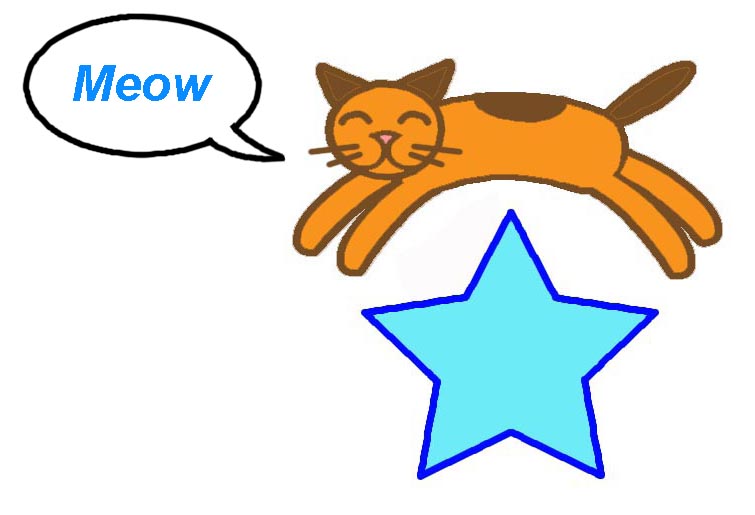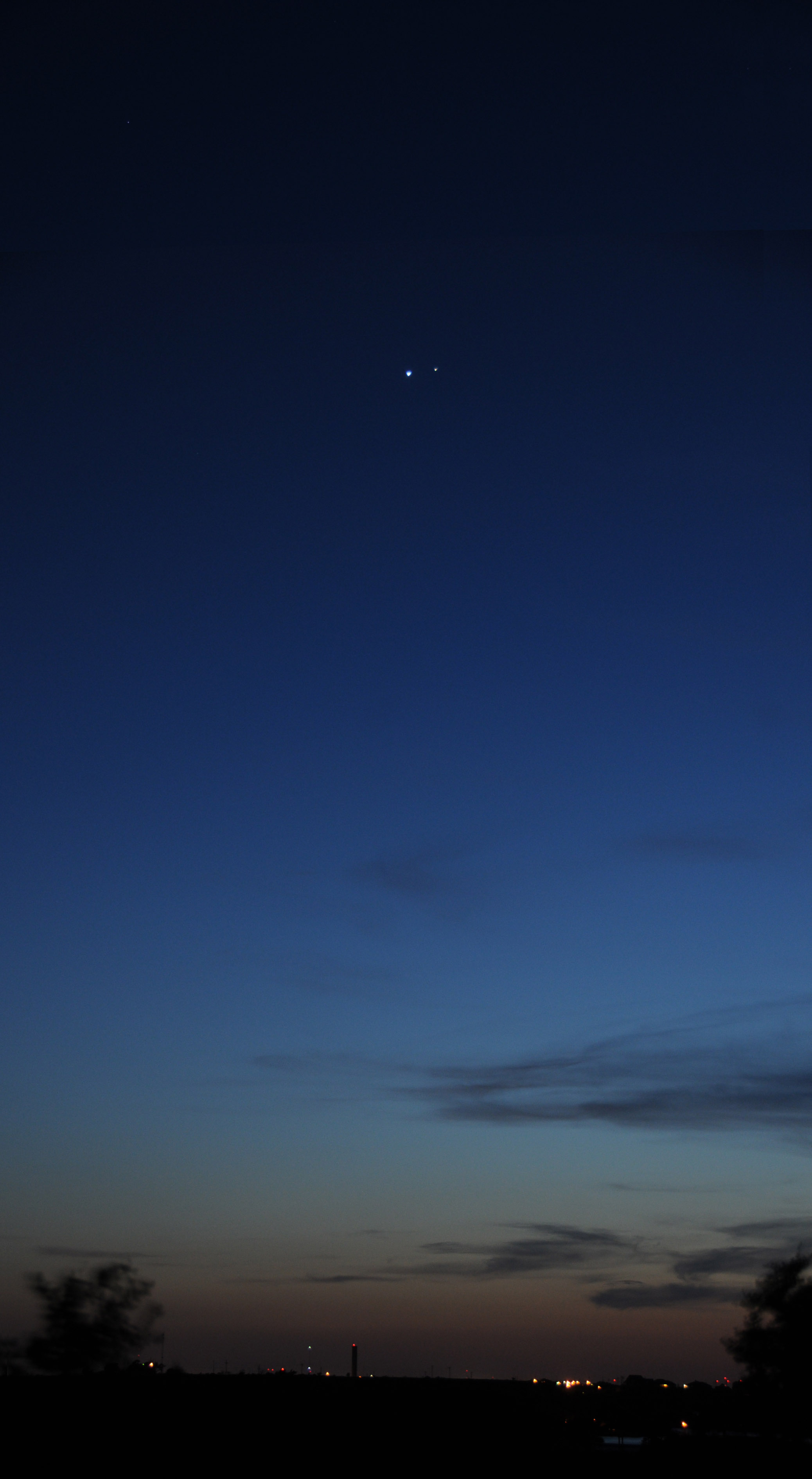
 | SOCO Blog |
02 July 2015
NOTABLE CONJUNCTIONS
For quite a while, the planet Venus has been a brilliant feature of the western sky in the evenings. Meanwhile, the planet Jupiter has started progressing to the west along the ecliptic following a long retrograde motion. It was obvious that, at some point, the two planets were going to meet. This is now happening. Last night (July 1), the evening dusk saw them perched about 30 degrees above the western horizon, separated by only 0.6 degree. I was able to record this conjunction photographically using my Nikon D300 digital camera and its Nikkor 18-300 mm ED telephoto lens mounted on a tripod. The photo in Figure 1 shows the scene at around 9:30 pm CDT looking due west from the SOCO site, as the twilight was just fading and night was coming on. At the same time, a near-full moon was rising in the east.

Figure 1. The conjunction of Jupiter (right) and Venus (left), photographed at around 9:30 pm CDT on 1 July 2015.
The conjunction was a beautiful sight. It got quite a bit of attention on the local news programs, perhaps to pre-empt a surge of reports of "things in the sky" from the local yokels. While an astronomical occurrence like this is mostly an object for admiration and wonder to us today, the same would not be true for observers in the past. To the astronomer-astrologers of ancient times, an occurence like this would have been incredibly important. For Jupiter, the king of the gods, to consort with Venus, the goddess of love— this could only portend an occurrence of the highest significance. Like the birth of a divine offspring. Sound familiar? Some historians have suggested that a similar conjunction of these two planets near the star Regulus (the brightest star in the constellation Leo, the Lion) on June 17, 2 BC, might be an explanation for the "Star of Bethlehem" appearing in the Christian Bible. In fact, some are calling our current conjunction the "Star of Bethlehem 2015" (Google it).
Only 11 days before, on the night of June 20, there was another spectacular conjunction in the western sky. This time it involved Jupiter, Venus, and the young crescent Moon. As shown in Figure 2, these three heavenly bodies formed an almost-perfect isosceles triangle, with the Moon and Venus each separated from Jupiter by around 5 degrees. As the sky darkened, the Moon exhibited quite a bit of earthshine. This is clearly visible in the photo in Figure 2, which is slightly over-exposed to bring it out. Figure 3 shows a view of this conjunction later in the night, not long before it dipped behind the trees. If you look carefully at the upper left corner of the photo, you can just make out Regulus.

Figure 2. Triangular conjunction among the Moon (left), Jupiter (center), and Venus (right), occurring on 20 June 2015.

Figure 3. The triangular conjunction approaching setting on 20 June 2015.
Conjunctions involving astronomical objects are not uncommon, yet they never cease to amaze me. Another spectacular conjunction will occur on July 18 involving four objects— the Moon, Jupiter, Venus, and Regulus. All will be crowded into a small space in the western sky, with the thinly cresecent Moon very close to Venus. Get your camera ready!
 Return to SOCO Blog Page
Return to SOCO Blog Page
 Return to SOCO Main Page
Return to SOCO Main Page
Questions or comments? Email SOCO@cat-star.org